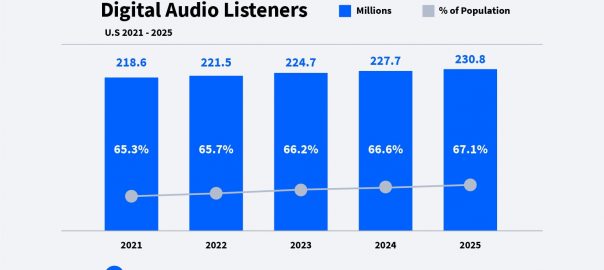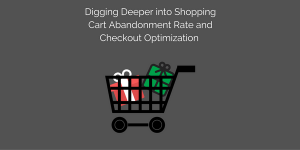Consumers today have many products and brands contending for their attention, which means the CPG industry is an especially competitive one. And in CPG digital marketing, it’s a challenge to keep up with emerging technologies as well as rapidly growing consumer demands.
The pandemic changed the way shoppers browse and buy, with a heavy focus on e-commerce and online ordering. According to McKinsey, lockdowns, as well as a shift in consumer priorities toward health and safety, condensed five years of e-commerce growth into three months.
These massive shifts are ones that CPG marketers should take note of and leverage, especially in planning their 2022 digital strategies. Read on for insights that will help you stay on top of trends that are relevant to CPG digital marketing. And be sure to read to the end of this blog to get your 4 tips before you leave!
New Consumer Trends That CPG Marketers Should Note
Since March 2020, notable consumer trends have emerged. Although these trends were accelerated by the pandemic, they aren’t at all contingent on it. Even as pandemic restrictions start to loosen in North America, consumers are sticking to their newly established shopping behaviours. Here are 4 key consumer trends CPG marketers should know:
With the uptick in e-commerce and time spent on mobile devices, m-commerce is top-of-mind in 2021.
eMarketer research shows US retail m-commerce sales grew at 41.4% in 2020 and will grow another 15.2% in 2021, to reach $ 359.32 billion. Annual m-commerce sales are expected to nearly double between 2021 and 2025.
With many consumers continuing to work from home, the homebody economy will persist into 2022.
When surveyed by Deloitte, US executives almost universally (95%) see the work-from-home trend continuing, and predict that the top purchase drivers will be health and safety (92%), trust (92%), and quality (88%) this year.
Consumers want brands to address sustainability and reflect other core values.
According to the Conference Board Global Consumer Confidence Survey, conducted in collaboration with Nielsen, 81% of global respondents feel strongly that companies should help improve the environment, while nearly half of American consumers say they would change their consumption habits to reduce their impact on the environment.
In June 2020, Mindshare found that 68% of US adults believed brands should speak out against racial inequality and injustice, while Visa found that 75% of millennials would support businesses and causes in response to social justice protests.
Consumers are trying new shopping behaviours.
The pandemic has driven acceleration of e-commerce adoption, as well as shopping behaviours that make the e-commerce experiences frictionless, like buy now, pay later (BNPL) and flexible payment options. But behaviours aren’t the only new things consumers are trying, they’ve been more open to trying new brands, too.
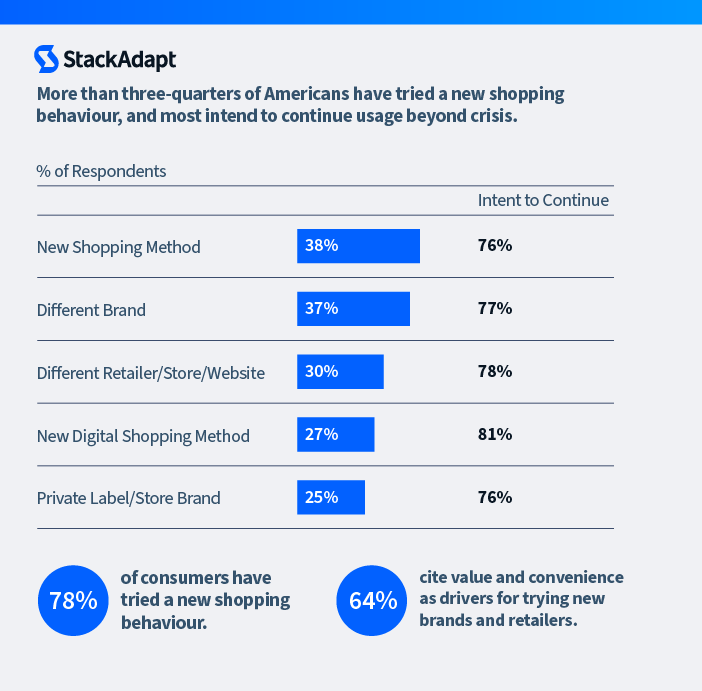
Digital Trends That are Shaping CPG Marketing
We’ve already highlighted some of the common consumer trends that have emerged since the start of the pandemic. These trends have been noted across verticals, making them relevant to most marketers. But there are digital trends that are particularly important for CPG marketers to note. Below, we’re exploring how personalization and emerging formats are both key CPG digital marketing trends that are gaining increasing relevance.
Personalization
In an increasingly digital and uncertain world, personalization is essential for the success of CPG brands. For example, 70% of the top DTC subscription brands use product quizzes to help personalize the customer experience. Quizzes and other personalization tactics help customers to select the products that fit them best, which leads to a higher likelihood of conversion, and more potential for long-term customer loyalty.
Another tactic that CPG digital marketers can use to improve personalization is contextual targeting. Contextual advertising is a cookieless targeting method that leverages content rather than user data to reach the right audience, at the right time. By targeting based on content, you can reach consumers who are in a receptive frame of mind. When your ads match the content that a consumer is browsing, those ads feel more natural and personalized to the user, which is what they want.
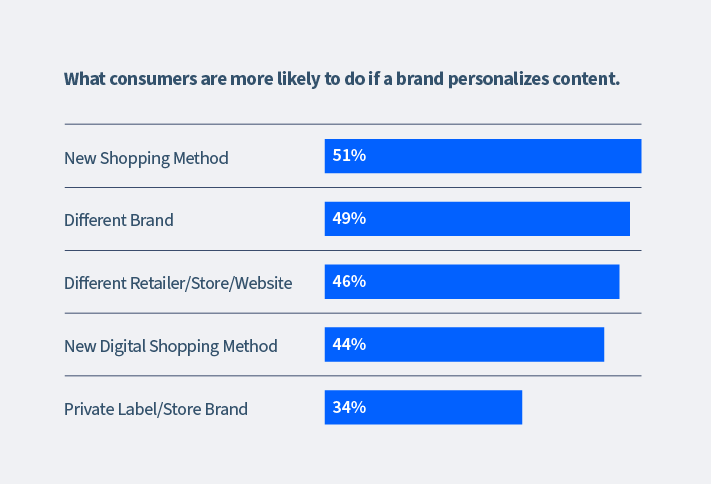
Emerging Formats
The pandemic led to a massive drop in commuting time, and with work from home becoming a permanent norm, the newly established “homebody economy” is likely to stick around. And it’s these consumer behaviours that have helped drive a surge in the popularity of new and emerging formats–like digital audio.
A major lesson of 2020 was that digital audio is resilient and adaptable. Commuting used to be a major driver of digital audio’s popularity, but despite the loss of that commuting time, active digital audio listeners spent over 2 hours per day with such media in 2020, and more than 70% of US adults listened to digital audio content at least once a month last year. We expect that the adoption of digital audio will continue to grow in the coming years. By 2025, 67.1% of Americans (218.6M) will be listening to digital audio.
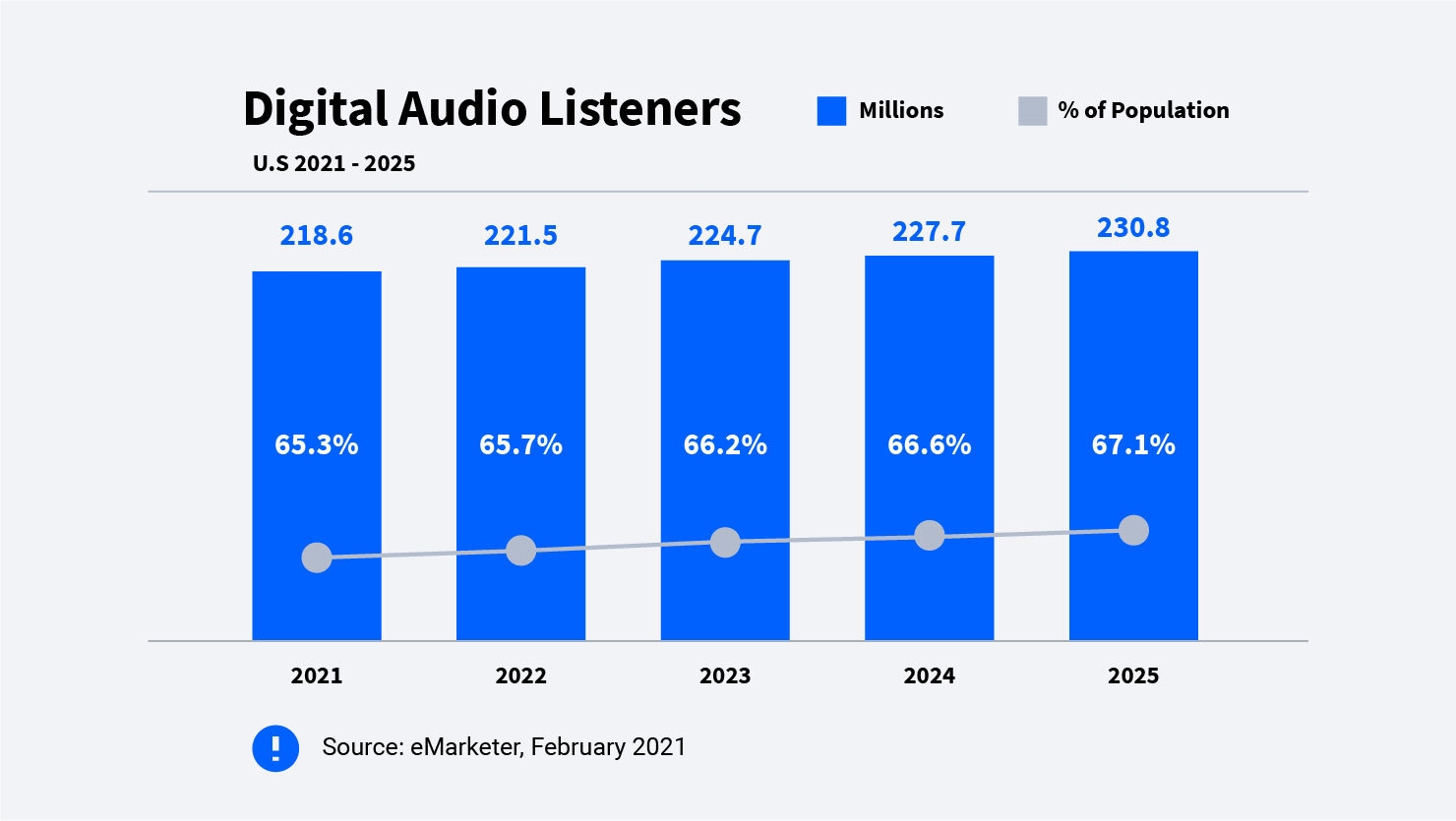
How CPG Marketers Can Drive Results in 2022
With shopping and product discovery increasingly moving online, the digital space will become more competitive. This massive shift to e-commerce has created the need for digital marketing strategies that speak to consumers on a personal level.
CPG digital marketers will have to do more to speak directly to the consumer while they browse online, and brands will need a strong online presence and coherent digital strategy if they expect to remain competitive in an increasingly crowded space. But making the shift to online also comes with unique benefits. CPG brands can gather more detailed data and insights about their consumers to support a more robust digital strategy.
Here are 4 tips to keep in mind as you put together your 2022 CPG digital marketing strategy:
- With consumer shopping behaviour rapidly changing, ensure your data strategy is fresh and nimble.
Use your transactional data to target new or lapsed buyers, whose change in shopping behaviour could be explained by the pandemic. Build Custom Segments or try contextual advertising to target the ‘at-home’ consumers in the upper funnel—people who are browsing recipe blogs or interested in self-care.
- Segment your audience to allow for personalization and optimization.
Break these audience tactics into different campaigns to test performance. Then, optimize toward key performance indicators (KPIs), such as brand awareness or sales lift.
- Reach shoppers at every stage of the customer journey with channels that mimic that journey.
Try incorporating OTT and digital video into your awareness tactics, and heavy-up on mobile throughout the funnel. Retarget off of video completion rates (VCR) with high-impact, interactive display units that strengthen your branding. Test out performance-driving native ads to mimic the feel of blog content and target those reading blogs and product reviews.
- A one-size-fits-all approach doesn’t work in a pandemic world—personalization is key.
Use contextual advertising to reach consumers who are in a receptive frame of mind. For example, if you’re selling cosmetics, use contextual targeting to ensure your ads appear alongside content that consumers interested in makeup are consuming, like blogs that cover makeup trends. That way, your ads are personalized to the users that they are served to.
Digital & Social Articles on Business 2 Community
(34)
Report Post